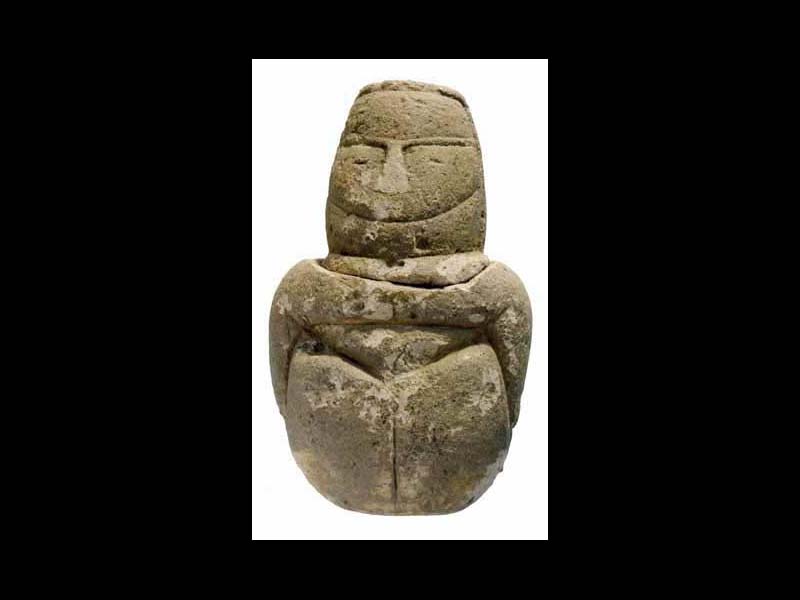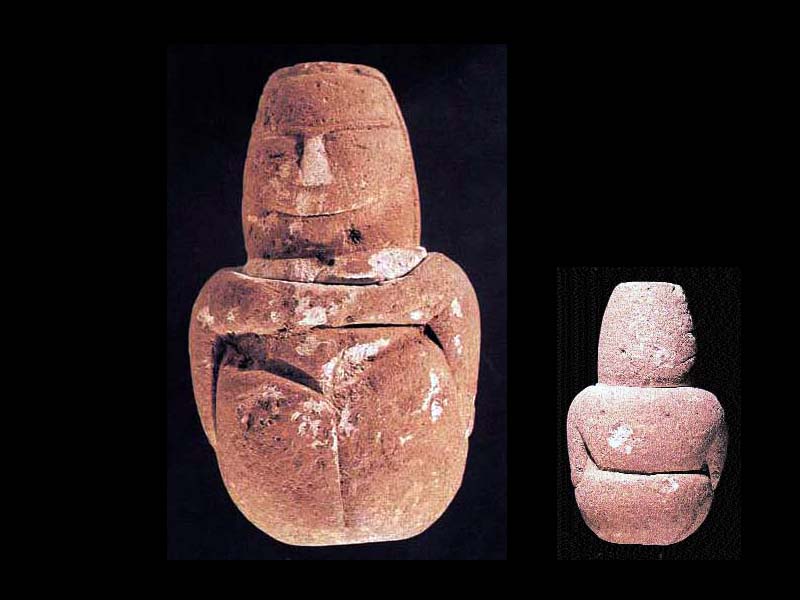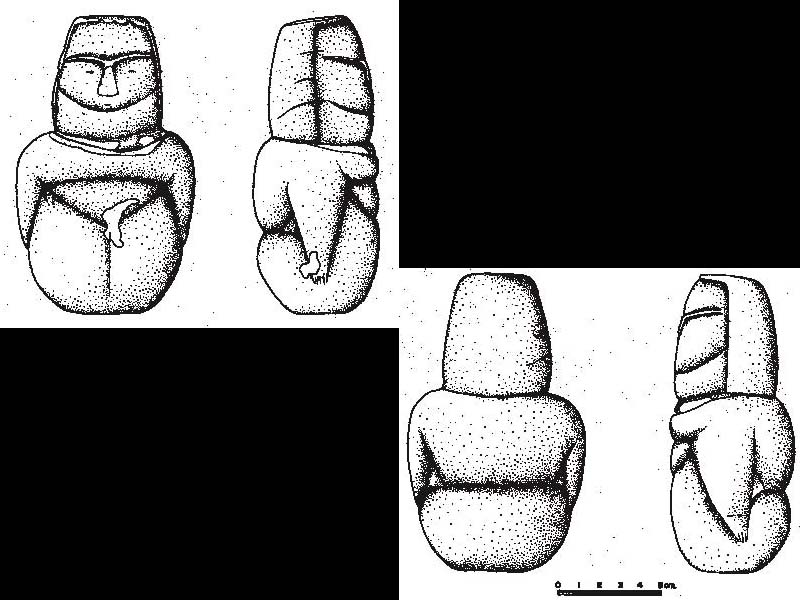In Sardinia the cult of the Mother Goddess is found everywhere. The Goddess accompanied the entire life cycle of our Ancestors and Ancestors, from birth to death, up to rebirth.
There are various Neolithic finds of “steatopygian” statuettes (a term in scientific language which in this case indicates a hypertrophy of the fat masses of the thighs and buttocks) in different parts of Sardinia, which demonstrate the cultural unity of this period.
In the typology in question, three main volumes prevail in the statuettes: the head, the bust-belly and the lower limbs. The Goddesses appear imprisoned in a uniform, absolutely static block. “Goddesses all in one piece!”
Della Dea of Olbia Marjia Gimbutas writes on page. 200 of the book "The language of the Goddess" (Fig. 315): "The Goddess of Olbia, a round nude in a rigid attitude with her arms close to her sides, carved in friable stone. Abdomen and pubic triangle combined; Bonu Ighinu culture. Santa Mariedda, near Olbia, northern Sardinia; mid-8,3th millennium BC; alt. XNUMXcm".
Perhaps it is no coincidence that it was created in Olbia (in Greek "happy”) 6500 years ago this Mother Goddess with an unforgettable smile, who seems to remind us through the millennia how important it is to exchange our smiles.



Historical notes
The very important find, which occurred during the works to widen a road for agricultural penetration into the territory of Santa Mariedda, has allowed scholars to go back to the Middle Neolithic (4.000 - 3.500 BC), a period known as the Bonu Ighinu culture. The name used to designate this temporal band of the Sardinian Neolithic derives from the site where the first archaeological evidence of human presence in the Olbia area was found: the Bonu Ighinu cave (also known by the name of Sa Ucca 'e su Tintirriolu) in the Mara, in the Sassari area.
CARD
LATEST PUBLISHED TEXTS
VISIT THE FACTSHEETS BY OBJECT

